Bible Study
Helpful Hints on Revelation
By Homer Duncan
Introduction
You will get much more from this booklet if you will prayerfully read the book of the Revelation two or three times before starting it. The book of the Revelation of Jesus Christ is the only book in the Bible that a special blessing is pronounced on those who read, on those who hear, and on those who keep the things that are written therein (Rev. 1:3). This promise does away with the notion that we cannot understand this
book and that we should not waste our time studying it.
It is true that there are portions of the book that are difficult to understand, but if the student will keep in mind four principles he will receive much blessing and benefit from the study of the book. These four principles are:
(1) Christ is the key. This is not the book of “Revelations” (plural), but it is “the Revelation (singular) of Jesus Christ.” When we call this book “Revelations” we study it as a series of revelations, but when we understand that Christ is the key we study it as the Revelation or unveiling of the
“King of Kings and Lord of Lords.”
(2) The Holy Spirit is the great teacher of the Holy Scriptures (John 14:26, John 15:26, 1 Corinthians 2:10). In a special way He delights to reveal prophetic truth (John 16:14).
(3) This is a book of prophecy. It has to do primarily with future events. God wants the believer to know and understand what the future holds.
(4) This book must be interpreted in the light of other Scriptures. The best commentary on the book of Revelation is the rest of the Bible.
Interpretation
With this book, as with all of the Bible, there is the problem of interpretation. Many teach that the Bible is an oriental book written in highly figurative language, and that we are not to interpret it in a literal sense. It is true that some of the Bible demands a spiritual interpretation, but we believe that God intends for us to accept most of the Bible in a literal sense. A good rule is given by David L. Cooper: “When the plain sense of the Scripture makes common sense, seek no other sense; therefore, take every word at its primary, ordinary, usual, literal meaning unless the facts of the immediate context, studied in the light of related passages and axiomated and fundamental truths, indicate clearly otherwise.” If we will follow this rule as we study the book of Revelation we shall be greatly helped in determining what we are to take literally and what we are to accept spiritually.
Relation to the Rest of the Bible
The book of Revelation is the great prophetic book of the New Testament. We study about the beginning of all things in the book of Genesis, and we learn of their end in the book of Revelation. The Old Testament prophets foretold both the sufferings of Christ and the glory that was to follow. The Gospel tells of His suffering and humiliation; the Revelation tells of His power and glory. As we study this book our hearts are thrilled with the wonderful harmony of the Scriptures. All that John writes is in wonderful accord with Moses, Isaiah, Ezekiel, Daniel, Matthew, Peter, and Paul. Just as a pyramid would be incomplete without its capstone, so also the Bible would not be complete without the capstone of the Revelation.
This is “The Revelation of Jesus Christ” and not “The Revelation of St. John the Divine.” The Apostle John was the human instrument that the Holy Spirit used to write the book. John had been exiled to the isle of Patmos in the Agean Sea for the Word of God and for the testimony of Jesus Christ. He was commissioned to write to
the seven literal, local churches in Asia.
Chapter one and verse nineteen is the key verse to the entire book, “Write the things which thou hast seen, and the things which are, and the things which shall be hereafter” (Rev. 1:19). There are three tenses in this verse, past, present,and future. Chapter one tells us about the things which are in the past; chapters two and three tell us about the things which are in the present; and chapter four through twenty-two tell us about the things that are in the future.
Chapter One
Chapter one has four distinct divisions: (1) Introduction 1-3, (2) Salutation 4-8, (3) The glory of Christ 9-18, (4) The command to write 19-20. The opening words give us the theme of the book. “The Revelation of Jesus Christ’ is about things that must shortly come to pass. It is sent to the seven churches in Asia. When Jesus comes the second time every eye will see Him, every knee shall bow, and every tongue shall confess that Jesus Christ is Lord to the glory of God, theFather.
In the Gospels we see Jesus as a bleeding Lamb.
Here we see Him as a roaring lion.
In the Gospels His blood is shed,
Here His garments are stained with the blood of the wicked.
In the Gospels “He answered them never a word.”
Here He slays the wicked with the breath of His lips.
In the Gospels He cried, “I thirst,”
Here He is the river of Living Water.
In the Gospels He rides on the foal of an ass,
Here He rides on a white stallion.
In the Gospels He is a Savior who died,
Here He is King who reigns.
If we are to know the Christ of the Bible we must know the prophecies concerning Him in the Old Testament, we must know the babe of Bethlehem, the Man of Galilee, and the Christ of Calvary as presented in the Gospels. We must know the Risen Christ of the Epistles, and we must know the King of Glory of the Revelation. How much we miss if we do not know Christ as He is revealed in the last book of the Bible!
The Seven Churches
In chapters two and three we have seven brief letters addressed to the seven churches. We are to study these churches from two view points. These churches were local assemblies of believers which were in existence at the time John wrote this book. They were located in the western part of Asia Minor (modern Turkey). The word “Asia”
does not refer to the vast continent of Asia as we know it today; it does not even refer to all of “Asia Minor.” At the time of the writing of this book it referred to the province in the extreme western part of modern Turkey. These cities were about twenty-five or thirty miles apart and were roughly located in the shape of an inverted horseshoe.
Ephesus, the metropolis of Asia, was sixty miles northeast of the Isle of Patmos from where the Apostle John was writing. The magnificent temple of Diana was one of the seven wonders of the world.
Smyrna was thirty-five miles due north of Ephesus. It was the most splendid of the seven cities and was the pride of Asia. The Christians who were there suffered much because they would not call Caesar Lord. Polycarp, the bishop of the church, was martyred here in 156 A.D. because he refused to call Caesar Lord.
Pergamum, a strong center of paganism, was fifty-five miles due north of Smyrna. It was fifteen miles from the Aegean Coast. The Acropolis of Pergamum crowned a steep hill that rose a thousand feet above the plain. It was an immense altar to Zeus.
Thyatira, the least important of the seven cities was about halfway between Pergamum and Sardis. It had a commercialrather than political distinction.
Sardis was thirty miles southeast of Thyatira and fifty miles due east of Smyrna. It was here that Croesus reigned with his treasures. Sardis had been devastated by an earthquake.
Philadelphia was about twenty-eight miles southeast of Sardis and it was built in a dangerous volcanic area. It had been completely demolished by an earthquake in A.D. 17 but now had been completely rebuilt.
Laodicea is about forty miles southeast of Philadelphia and due east of Ephesus. It was a banking center, and it had a famous medical school. The city is now in complete ruins.
The chart in the center of this booklet will give much helpful information about the letters to these churches. There are seven things in common in each one of the letters. First, the command to write; second, the description of the speaker, third, the condition of the church; fourth, a warning of weakness; fifth, His second coming; sixth, the exhortation to hear, and seventh, the promise to the overcomer.
Not only are these letters important because they were addressed to local churches that were in existence at the time John wrote, but also because they represent seven periods of church history from the beginning of the church to thesecond coming of Christ. Ephesus represents the Apostolic Church (A.D. 33 to A.D. 100). Smyrna represents the church of the martyrs (A.D. 100 to A.D. 313). Pergamum represents the period of pagan Rome (A.D. 313 to A.D. 590). Thyatira represents papal Rome (A.D. 590 to A.D. 1517). Sardis is the church of the reformation (A.D. 1517 to A.D. 1792). Philadelphia is the missionary church (A.D. 1792 to A.D. 1914). Laodicea is the apostate church (A.D. 1914 to the second coming of Christ). The time element for the last four churches overlaps.
The Throne of God and a Book
As we begin chapter four it is important to notice that the scene changes from earth (chapter two and three) to heaven. (Watch for this shift in scenes as you read this book.) “After this I looked, and behold, a door was opened in heaven (4:1). In chapter four, as in no other place in the Bible, we have a picture of the throne of God. In chapter five our attention is drawn to a book that is held in the hand of God. It is not a book in the sense that we think of a book today, that is, a book that is bound and having pages, but rather it is a scroll. The Bible says that it was written within and on the back side and was sealed with seven seals. A strong angel steps out and proclaims with a loud voice, “Who is worthy to open the book, and to loose the seals thereof” When John saw that no man on earth or in heaven was worthy to open the book he wept much. Then the angel said to him, “Weep not: behold the lion of the tribe of Judah hath prevailed to open the book and loose the seals thereof.” This causes the redeemed to sing a new song, “Thou art worthy to take the book, and to open the seals thereof: for thou wast slain, and hast redeemed us to God by thy blood out of every kindred, and tongue, and people, and nation; and hast made us unto our God kings and priests: and we shall reign on the earth (5:9, 10).
The Great Tribulation
In speaking of the last day Jesus said, “For then shall be great tribulation, such as was not since the beginning of the world to this time, no, nor ever shall be. And except those days should be shortened, there should be no flesh saved: but for the elect’s sake those days shall be shortened” (Matthew 24:21, 22). This period is also called: “The day of the Lord” (Isaiah 2:12, 13:6, 9, Jeremiah 46:10, Joel 2:1,11, 3:14, Amos 5:20, Zephaniah 1:7, Zechariah 14:1), The Indignation (Isaiah 26:20, 34:2), the time of Jacob’s trouble (Jeremiah 30:7), a time of trouble (Daniel 12:1), Daniel’s Seventieth Week (Daniel 9:25-27), and the hour of temptation (Revelation 3:10), and “The Great Day of His Wrath” (Revelation 6:17). Chapters six through nineteen of the book of
Revelation give the details of what will take place during this period. In this portion there are three series of divine judgments: the opening of the seals, the blowing of the trumpets, and the pouring out of the seven vials of wrath. It willhelp us not to be confused if we recognize that between the sixth and seventh seal and between the sixth and seventh trumpet and the sixth and seventh vial of wrath there is a parenthetical portion. By this we mean that the writer digresses from his main trend of thought to give an explanation that is needed at that point.
In chapter six the Lord Jesus Christ, having taken the book from the hand of God, begins to open the seals of the book one by one. When He opens the first seal John sees a rider upon a white horse. Many have interpreted this to be the Lord Jesus Christ, but we must remember for all that God has that is true and genuine the Devil has a counterfeit. Later in chapter nineteen we will see the Lord Jesus Christ riding upon a white horse, but the rider here is not Christ butrather Satan’s counterfeit of Christ, the antichrist. The Bible has much to say about this man who will reign on the earth during the period of the great tribulation. We will study more about him in chapter thirteen.
It is not difficult for us to identify the red horse for the Bible says the power was given unto the rider of this horse to take peace from the earth and that they should kill one another. He has a great sword. We will call him “War.”
It is not difficult to identify the black horse because he who sat upon him had a pair of balances in his hand and we see him as he weighs out the wheat and barley. This horse is Famine.” Death rides on the fourth horse which is pale or livid green. He will kill one-fourth of the people on the earth with the sword and with hunger. The population of the earth at the present time (1964) is about three billion people. This means that 750 million people will be killed in this one series of judgments.
When the fifth seal is opened we see under the altar the souls that were slain for the Word of God and for the testimony which they held.
When the sixth seal was opened there was a great earthquake, the sun became black as sack cloth of hair, and the moon became as blood, and the stars of heaven fell to earth even as the fig tree casteth her untimely figs when she is shaken by a mighty wind. In the midst of this terrible catastrophe we see the kings of the earth, the great men, the rich men, the chief captains, bondmen and the free men hiding themselves in the dens and the rocks of the earth crying out, “Fall on us and hide us from the face of Him who sitteth on the throne and from the wrath of the Lamb: for the great day of His wrath is come; and who shall be able to stand?”
Chapter seven is the parenthetical portion between the sixth and the seventh seal. It mentions two distinct groups. The first group is one hundred forty-four thousand which are sealed of the twelve tribes of the children of Israel. The second great group is composed of a great multitude (not a definite number as in the case of one hundred forty-four thousand) from all nations (rather than being from the one nation Israel). This group is identified as “they that have come out of great tribulation, and have washed their robes, and made them white in the blood of the lamb.” The question is often asked, “Will anyone be saved during the tribulation?” The Scripture clearly shows that people will be saved, but it also shows that those who are saved will seal
their testimony with their own blood. The only ones who will be saved during the tribulation will be the ones who have not heard the Gospel previous to that time. All who have heard the Gospel during the present age of grace, but who have rejected it, will be damned (2 Thessalonians 2:10-12).
In chapter eight and verse one we have the opening of the seventh seal. The Bible says, “And when he had opened the seventh seal, there was silence in heaven about the space of half an hour.” What does this mean? If we begin to speculate and theorize we will never have any idea as to what these simple words mean, but if we accept them in a literal sense, at their face value, there is no difficulty whatever in understanding their meaning.
The context indicates that we are to accept literally that there will be silence in heaven for the space of half an hour. The next series of judgments is the blowing of the seven trumpets. Think of the tremendous psychological effect thiswill have on the inhabitants of the earth when they see the seven angels standing on the walls of heaven preparing to blow their trumpets, but before they blow there is silence for half an hour.
When the first trumpet is blown, the Bible says, “There was hail and fire mingled with blood, and they were cast upon the earth: and the third part of the trees were burned up, and all the green grass was burned up.” What does this mean? Once again if we theorize and speculate we will never have any idea as to what it means, but if we accept it in its literal sense there is no problem at all. When the second trumpet is
sounded a great mountain burning with fire was cast into the sea and the third part of the sea became blood.” Some of the learned scholars tell us that this refers to all of the great maritime battles of history. You may believe this if youlike, but I prefer to accept it in its literal sense.
When the third trumpet is blown a great star from heaven falls upon the third part of the rivers and the fountains of water, causing them to become bitter.
When the fourth trumpet sounds the third part of the sun and the third part of the moon and stars are smitten so that they do not shine for the third part of the day.
When the fifth trumpet is sounded a star falls from heaven to the earth, and the Bible
says, “To him was given the key to the bottomless pit.” This would indicate to us that the star is not to be taken in a literal sense, but it refers to a person. When the bottomless pit is opened a great swarm of locusts pour forth from the pit appearing to be a great cloud of smoke. The Bible says that the shape of the locusts are like horses, that they have the faces of men and hair of women, and the teeth of lions, breastplates of iron, and that the sound of their wings is asthe sound of the chariots of many horses running to battle. They sting men with their tails and the sting lasts for five months.
When the sixth angel sounds his trumpet four angels are loosed which have been bound in the River Euphrates. These four angels have been prepared for an hour, and a day, and a month, and a year to slay the third part of the men. Wehave seen that the population of the earth is roughly 3 billion people. Seven hundred and fifty million were killed in the judgments of the seals. This vast army of two hundred million will
kill another seven hundred and fifty million people.
Chapter ten is the parenthetical portion between the sixth and seventh trumpets. In these verses we read of the only thing that is definitely sealed in this book of Revelation. When John heard the voice of the seven thunders he started to write, but he heard a voice from heaven saying to him, “Seal up those things which the seven thunders uttered and write them not.” In the last part of this chapter we read of a little book which was in his mouth as sweet as honey but which became bitter when taken into his belly.
Chapter eleven tells about two witnesses. There has been much speculation as to who these two witnesses are, but if you will carefully study the attributes that are given to these two men you will discover that they are Moses and Elijah.When the seventh trumpet sounded there were great voices in heaven saying, “The kingdoms of this world are become the kingdoms of our Lord, and of His Christ, and He shall reign forever and forever.” This clearly teaches us that the Lord Jesus Christ will rule and reign upon the earth. It also teaches us that men cannot bring about an earthly millennium by their own efforts, but that a reign of peace and righteousness will be
established when Jesus Christ Himself rules as King of Kings and Lord of Lords.
In chapters twelve and thirteen we have seven personages. The first personage is a woman that is clothed with the sun. Some teach that this woman is the Church, but we believe that she is Israel because she brings forth the man who is Christ. Israel, not the Church, brought forth Christ. The second personage is a great red dragon. There is no problem in identifying him for verse nine tells us that he is the old serpent, called the Devil and Satan. The third personage is the man child who is, of course, the Lord Jesus Christ. It is interesting to notice that He will rule the nations with a rod of iron. He did not do this when He came the first time, but this will be fulfilled when He comes the second time. The fourth personage is Michael, the archangel. The fifth personage is the Jewish remnant (12:17).
The Antichrist
The sixth personage is the antichrist. In chapter thirteen two beasts are mentioned. The first is out of the sea; the second is out of the earth. The first beast is a political ruler; the second is a religious leader. The first beast is the antichrist. Wehave already been introduced to him as the rider on the white horse (Rev. 6:2). The Lord Jesus said of him, “I am come in my Father’s name, and ye receive me not: if another shall come in his own name, him ye will receive” (John 5:43).Jesus also called him the “abomination of desolation” (Matthew 24:15).
The prophet Daniel has more to say about him than any other writer of the Scriptures. Daniel sees him as “a littlehorn” which arises among the ten horns (kings-dictators) who will be ruling in the area of the old Roman Empire in the lastdays. Daniel said that he had the eyes of a man, and a mouth speaking great things (Daniel 7:8). Daniel calls him a king of fierce countenance who understands dark sentences. “His power shall be mighty, but not by his own power: and he shall destroy wonderfully, and shall prosper, and practice, and shall destroy the mighty and the holy people. And through his policy also he shall cause craft to prosper in his hand; and he shall magnify himself in his heart, and by peace shall destroy many: he shall also stand up against the Prince of princes; but he shall be broken without hand” (Daniel 8:24-25). “The people of the prince that shall come shall destroy the city and the sanctuary; and the end thereof shall be with a flood, and unto the end of the war desolations are determined. And he shall confirm the covenant with many for one week: and in the midst of the week he shall cause the sacrifice and the oblation to cease, and for the overspreading of abominations he shall make it desolate” (Daniel 9:26, 27). This is what Jesus referred to in Matthew 24:15. “The king shall do according to his will; and he shall exalt himself, and magnify himself above every god, and shall speak marvelous things against the God of gods … neither shall he regard the God of his fathers, nor the desire of women . . . shall he honor the God of forces … yet shall he come to his end, and none shall help him” (Daniel 11:36-45). Carefully compare these references in Daniel with Revelation 13:1-10).
The Apostle Paul calls him “the man of sin, and the son of perdition, and the Wicked One” (2 Thessalonians 2:3-12). The Apostle John tells us of his final doom, “And I saw the beast, and the kings of the earth, and their armies, gatheredtogether to make war against him that sat on the horse, and against his army. And the beast was taken, and with him that false prophet that wrought miracles before him, with which he deceived them that had received the mark of thebeast, and them that worshipped his image. These both were cast alive into a lake of fire burning with brimstone”. (Rev. 19:19-20).
The seventh personage is the beast out of the earth (Rev. 13:11-18). He has the horns of a lamb but speaks as a dragon. He makes all men to worship the antichrist. He causes all men to receive a mark in their right hand or on their forehead. All who receive this mark will be cast into hell to burn forever and forever (Rev.14:9-11).
Armageddon
One of the highest goals of civilized man is to abolish war, but men cannot be at peace with one another when they are at enmity with God. Jesus said that there would be wars and rumors of wars until His second coming (Matthew 24:6). The battle of Armageddon is predicted and described in many Old Testament Scriptures (Isaiah 34:1-8, 63:1-6, Joel 2:1-11, 3:9-13, Zephaniah 1:14-18, 3:8, Zechariah 12:9-11, 14:1-3). This great battle will be fought in the plain of Megiddo. A glance at a world map will show that the land of Palestine is at the meeting place of three great continents: Asia, Africa, and Europe. God will gather the armies of all the nations of the world to this great valley. When Napoleon beheld the plain of Megiddo he said it was the greatest battle field on the face of the earth. The Lord Jesus Christ will trample the nations in His fury. His garments will be stained with their blood. So great will the slaughter be that the blood will flow out of the valley for a distance of 170 miles to the depths of the bridles on the horses (Rev. 14:14-20). When the kings of the earth and the mighty military men of all nations see the Son of God coming from heaven riding on a white horse they will think that they can easily blast Him from the sky with their atomic war heads, but “He that sitteth in the heavens shall laugh: the Lord shall have them in derision. Then shall He speak to them in His wrath, and vex them in His sore displeasure” (Psalms 2:4,5). Then the Lord says, “Yet have I set my king upon my holy hill of Zion. I will declare the decree: the Lord hath said unto me, Thou art my Son; this day have begotten thee. Ask of me, and I shall give thee the heathen for thine inheritance, and the uttermost parts of the earth for thy possession. Thou shalt break them with a rod of iron; thou shalt dash them in pieces like a potter’s vessel” (Psalms 2:6-9).
Isaiah gives us this dialogue: “Wherefore art thou red in thine apparel, and the garments like him that treadeth in the winefat? I have trodden in the winepress alone; and of the people there was none with me: for I will tread them in mine anger, and trample them in my fury; and their blood shall be sprinkled upon my garments, and I will stain all my raiment. For the day of Vengeance is in mine heart, and the year of my redeemed is come. And I looked, and there was none to help; and I wondered that there was none to uphold: therefore mine own arm brought salvation unto me; and my fury, it upheld me. And I will tread down the people in mine anger, and make them drunk in my fury, and I will bring down their strength to the earth” (Isaiah 63:2-6).
The Vials of God’s Wrath
In chapter sixteen we witness the pouring out of seven vials of God’s wrath. When the first angel pours out his vial noisome and grievous sores cover the bodies of men who have received the mark of the beast. When the second angelpours out his vial upon the sea it becomes as the blood of a dead man and every living soul who is in the sea dies. When the third angel pours his vial upon the rivers and fountains of water they become blood. When the fourth angelpours out his vial upon the sun men are scorched with the great heat and blaspheme the name of God which had power over these plagues, but they do not repent to give Him glory. When the fifth angel pours out his vial upon the seat of the beast his kingdom is filled with darkness and men gnaw their tongues for pain and curse and blaspheme the God of heaven, and yet do not repent of their evil deeds. When the sixth angel pours out his vial upon the great River
Euphrates the waters are dried up so that the way of the kings of the East might be prepared.
Once again we have a parenthetical portion (verses 13-16) between the sixth and seventh vials as we did in the case of the sixth and seventh seal and the sixth and seventh trumpet.
When the seventh angel pours out his vial in the air there are voices, thunderings and lightenings, and a great earthquake, such as was not upon the earth since the beginning of time. Great hailstones weighing 120 pounds pulverize the earth. Instead of those plagues causing men to repent and turn to God they cause men to blaspheme Him. I call to your attention that it is very easy to understand this chapter if we accept it in a literal sense, but if we seek to give it an allegorical meaning no one under God’s heaven knows what it means.
Chapters seventeen and eighteen tells us about Babylon. She is called the great whore which sitteth upon many waters. She is called the mother of harlots and abominations of the earth. The Bible says that she is drunkened with the blood of saints and the blood of martyrs of Jesus. Just as the Lord Jesus Christ has His Church
who is clothed in garments pure and white, so also Satan has his church which is this filthy woman who is clothed in purple and scarlet and gold and precious stones and pearls. The true Church is the Bride of Christ. Satan’s church is the apostate ecumenical movement. History reveals that Rome is drunkened with the blood of saints and with martyrs of Jesus Christ. The Babylon of chapter eighteen is both a city and a system.
The Second Coming of Christ
In chapter nineteen we come to the climax of the book: the Second Coming of the Lord Jesus Christ. “And I saw heaven opened, and behold a white horse; and he that sat upon him was called Faithful and True, and in righteousness he doth judge and make war. His eyes were as a flame of fire, and on his head were many crowns; and he had a name written, that no man knew, but he himself. And he was clothed with a vesture dipped in blood: and his name is called The Word of God. And the armies which were in heaven followed him upon white horses, clothed in fine linen, white and clean. And out of his mouth goeth a sharp sword, that with it he should smite the nations: and he shall rule themwith a rod of iron: and he treadeth the winepress of the fierceness and wrath of Almighty God. And he hath on his vesture and on his thigh a name written, KINGS OF KINGS, AND LORD OF LORDS. And I saw an angel standing in the sun; and he cried with a loud voice saying, to all the fowls that fly in the midst of heaven, Come and gather yourselves’ together unto the supper of the great God; That ye may eat the flesh of kings, and the flesh of captains, and the flesh of mighty men, and the flesh of horses, and of them that sit on them, and the flesh of all men, both free and bond, both small and great. And I saw the beast and the kings of the earth, and their armies gathered to make war against him that sat on the horse, and against his army. And the beast was taken, and with him the false prophet that wrought miracles before him, with which he deceived them that had received the mark of the beast, and them that worshipped his image. These both were cast alive into a lake of fire burning with brimstone” (Rev. 19:11-20).
Chapter Twenty has been called the most controversial chapter in the Bible. If we try and interpret it in a figurative sense no one knows what it means, but if we accept it in a literal sense it is so simple that a child can understand it. This chapter tells us that the Lord Jesus Christ is coming back to rule and reign upon the earth for a thousand years. Modernist, ecumenical leaders, and even many more born again denominational leaders do not interpret this chapter in a literal sense because to do so cuts across the grain of their man-made program to bring in the kingdom. The pre-millennialist teaches that the Lord Jesus Christ is coming back to rule and reign on the earth and that by His coming He will bring peace and righteousness on the earth for a
thousand years. The A-millennialist deny that there will be a millennium. They tell us that this twentieth chapter of Revelation is the only place in the Bible where the millennium is mentioned, and that this is a highly figurative book that we are not to interpret in a literal sense. They delight in quoting, “One day is with the Lord as a thou-
sand years, and a thousand years as one day” (2 Peter 3:8). Yes, since our God is the eternal God one day is with Him as a thousand years, and a thousand years as one day, but when He tells us as mortal men that a period of time will last a thousand years, He means that it will last a thousand years!
It is true that this is the only place in the Bible where the length of the millennium is given, but there are dozens of Old Testament Scriptures which describe this time (2 Samuel 7:14-17, Psalms 24:1-10, Psalms 72:1-20, Isaiah 2:1-5, 11:1-10, 35:1-10, and Daniel 2:44). Chapter twenty describes for us the great White Throne Judgment which is the judgment of the wicked dead. The righteous dead have been raised a thousand years prior to this time. They have been judged, not on the basis of their sins, but on the basis of their works because all of their sins were atoned for when Jesus died on Calvary’s Cross.
Chapters twenty-one and twenty-two describe for us the new heaven, the new earth, and the new Jerusalem. What glory awaits the child of God! John sees this beautiful city coming down from God out of heaven, the bride adorned for her husband. The city glistens as a diamond. The great wall about the city has twelve gates and over the gates are the names of the 12 tribes of the children of Israel. The wall of the city has twelve foundations and in them are the names of thetwelve apostles of the Lamb. This city is a great cube that is 1300 miles long, 1300 miles wide, and 1300 miles high. In the city there is no temple for the Lord God Almighty and the Lamb are the temple of it. The city has no need for thesun or the moon to shine for the glory of God is the light thereof. In this city there is no night and God shall wipe away all tears from their eyes; there shall be no more death, neither sorrow, nor crying, neither shall there be anymore pain: for the former things are passed away.
Out of the throne of God flows a river of pure water which is clear as crystal. On each side of the river there is the tree of life which bears twelve manner of fruits and yields her fruits every month, and the leaves of the tree are for the healing of the nations.
What contrast we find in the book of the Revelation! We behold glories and delights that are entirely beyond the conception of man. But we also learn of terrible and tragic events that stagger the imagination. God, who is love, hasbeen patient and long- suffering with the sons of men even though they have spurned His love and persecuted His servants. God is not only love, He is also holy, and because He is holy He must punish sin. He is a God of wrath and of judgment. This book gives the details of how His wrath will be poured out on proud, haughty, Christ rejecting, sinners. The great day of His wrath has come and who will be able to stand?
My friend, when these terrible events take place where will you be? God will not pour out His wrath on His own children (1 Thessalonians 5:9). All who are in Christ will be caught up to meet Christ in the air before these terrible things take place (1 Thessalonians 4:13-18). To be in Christ we must be born again by the Spirit of
God (John 3:1-18). We are born again when we receive the Lord Jesus Christ into our heart (John 1:12).
Salvation is the free gift of God because the Lord Jesus Christ paid for our redemption when He died on Calvary’s Cross nearly two thousand years ago. “For Christ also hath once suffered for sins, the just for the unjust that He might bring us to God’. (1Peter 3:18.)
One of the great invitations of the Bible is found in the closing verses of the book of the Revelation. “And the Spirit and the Bride say, Come. And let him that heareth say, Come. And let him that is athirst come. And whosoever will, let him take of the water of life freely” (Rev. 22:17). Jesus stands at the door of your heart and wants to come in. If you will open the door, He will come in to be your Savior and Lord. His precious blood will cleanse all of your sins, andyou will have everlasting life. Will you not bow
your head and pray a simple prayer something like this: “Lord Jesus, I know that I am a sinner and that I need a Savior. I believe that you died on the Cross for my sins, and that you were raised again the third day according to theScriptures. I now invite you to come into my heart as my Savior and Lord. I thank you for saving me.”
Appendix
Some of the Sevens in Revelation
1. Churches 1:4, 20
2. Spirits 1:4, 3:1, 4:5, 5:6
3. Candlesticks 1:13, 20, 2:1
4. Stars 1:16, 20, 2:1, 3:1
5. Members 1:14-16
6. Angels 1:20, 8:2, 15:1
7. Letters Ch. 2-3
8. Lamps 4:5
9. Seals 5:1, 5
10. Horns 5:6
11. Eyes 5:6
12. Doxologies 5:12, 7:12, 11:15, 12:10, 14:4,15:3, 19:1
13. Earthquakes 6:12, 8:5, 11:13, (2x), 11:19, 16:18 (2x)
14. Altars 6:9, 8:3, 5, 9:13, 11:1, 14:18, 16:7
15. Attributes 7:12
16. Trumpets 8:2, 6
17. Bottomless pit 9:1, 2, 11, 11:17, 20:1, 3
18. Thunders 10:3, 4
19. Thousand 11:13
20. Crowns 12:3
21. Personages Ch. 12-13
22. Sickles Ch. 14
23. Plagues 15:1, 6, 8, 21:9
24. Vials 15:7
25. Heads 17:7, 3, 9, 12:3, 12
26. Mountains 17:9
27. Kings 17:10, 11
28. Dooms 17-20
29. Former things 21:1-4
30. New things Ch. 21-22
Bible Study Publications to Download
-
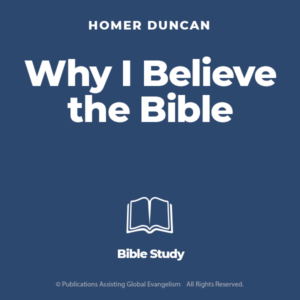
Why I Believe the Bible
$0.00 -
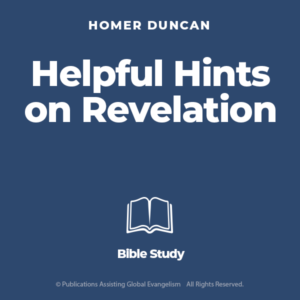
Helpful Hints on Revelation
$0.00 -
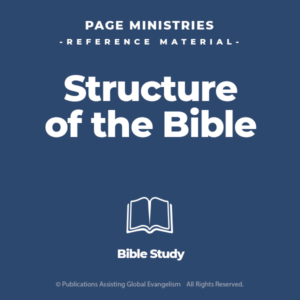
Structure of the Bible
$0.00 -
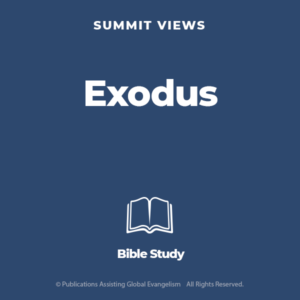
Summit Views: Exodus
$0.00 -
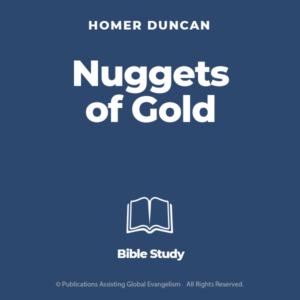
Nuggets of Gold
$0.00 -
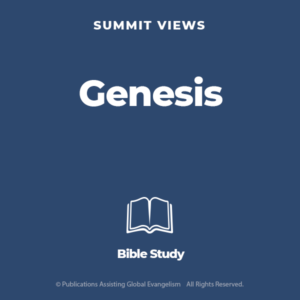
Summit Views: Genesis
$0.00 -
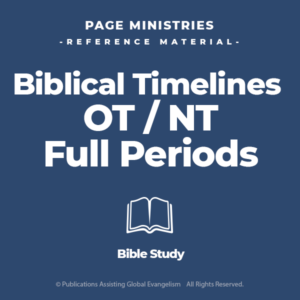
Biblical Timelines – OT/NT Full Periods
$0.00 -
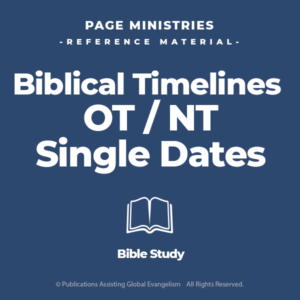
Biblical Timelines – OT/NT Single Dates
$0.00 -
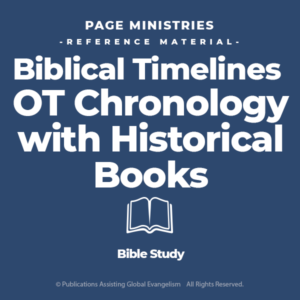
Biblical Timelines – OT Chronology with Historical Books
$0.00 -
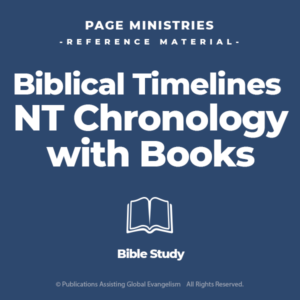
Biblical Timelines – NT Chronology with Books
$0.00 -
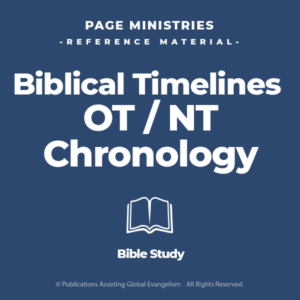
Biblical Timelines – OT/NT Chronology
$0.00 -
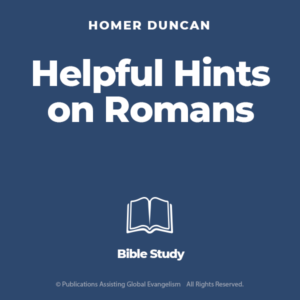
Helpful Hints on Romans
$0.00
